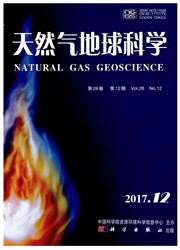

 中文摘要:
中文摘要:
应用地质、测井和地震结合的方法,以松辽盆地王府断陷火石岭组火山岩为研究实例,研究火山岩冷却单元及其天然气成藏的意义。根据火山作用方式、岩性与岩相序列样式,将冷却单元划分为熔岩型、碎屑岩型和碎屑岩+熔岩型3种类型。不同类型的冷却单元内部具有不同的岩性和岩相组合,具有不同火山岩储层意义。其中熔岩型冷却单元的储层条件最好,最有利于天然气成藏,其次是碎屑岩+熔岩型冷却单元,而碎屑岩型冷却单元的储层条件最差,含气性也最差。冷却单元组(对应于火山机构)是基本的成藏单元,冷却单元组的叠置形成天然气成藏系统,从下到上表现出水层、气-水同层、气层的分布规律。
 英文摘要:
英文摘要:
The volcanic cooling unit and its significance on natural gas accumulation were studied and the example came from Huoshiling Formation of the Wangfu fault depression in Songliao Basin, using a method combining geology,logging and seismic geophysics. The volcanic cooling units are classified into 3 types of lava,pyroclastic and pyroclastic+ lava, according to volcanism, the succession of lithology and lithofacies. Different types of volcanic cooling units have different meanings for volcanic reservoirs,due to associations of both lithology and lithofacies. The lava type is the best in reservoir condition, beneficial to the gas accumulation most among the three,and the pyroclastic+lava type is better than the pyroclastic type with poor gas bearing. The volcanic cooling unit set,corresponding to the volcanic edifice,is the basic unit for gas acumulation,superimposing a natural gas accumulation system which presents water layer, gas-water layer and gas layer distributed from the bottom toward up.
 同期刊论文项目
同期刊论文项目
 同项目期刊论文
同项目期刊论文
 期刊信息
期刊信息
